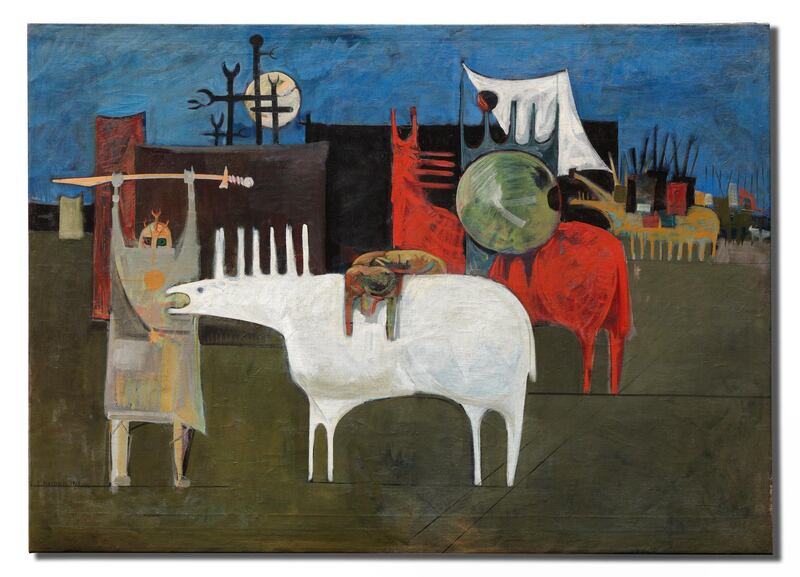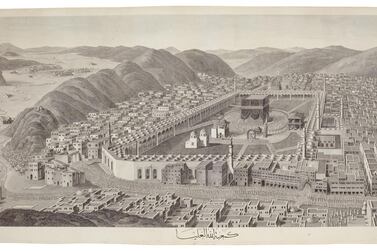"There are some times in the history of art when certain figures stimulate a way of thinking that brings in a lot of other people," Iraqi author and scholar Kanan Makiya says about the "golden age" of Iraqi modern art.
“And suddenly, there are all kinds of new experiences, and new ways of seeing things emerge.”
The 'golden age' of Iraqi art
The 1950s and 1960s were a period of extraordinary creativity and production in Baghdad, when artists, architects and writers navigated a path between modernism and Iraqi tradition.
Jewad Selim produced the Freedom Monument, a work drawing from both Picasso's Cubism and Assyrian friezes, in Tahrir Square; Kadhim Hayder began his monumental painting cycle The Epic of the Martyr, which allegorised both Islamic history and the persecution of the left after the Baath Party coup in 1963; others looked to Sumerian idioms and calligraphy in their abstract paintings.
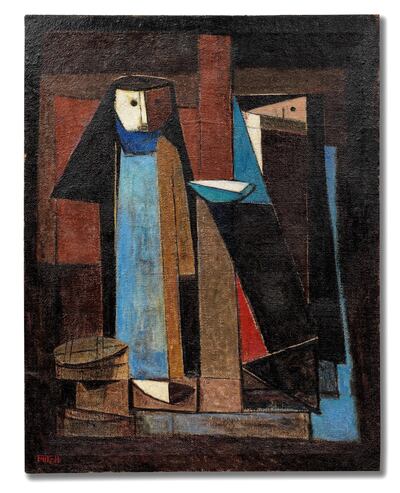
But the aftermath of this period has been punctuated by staccato bursts of tragedy. Its key artists – Jewad Selim, Shakir Hassan Al Said, Faeq Hassan, Dia Al Azzawi, Mohammed Ghani Hikmat and Lorna Selim, among others – dispersed, and growing political repression stifled the period's freedom and exploration.
In an eerie echo of their makers, a large tranche of the paintings dispersed a few decades later, too. The Iraqi Museum of Modern Art was looted after American troops moved into Baghdad in 2003. Some of these works have been recovered on the black market, but the whereabouts of most remain unknown.
This makes the forthcoming Modern & Contemporary Middle Eastern Art sale at Bonhams a big deal: in June, the London auction house will sell part of two of the most important extant groups of work dating from Iraq's golden age, the Madhloom and Makiya collections.
The intertwining paths of Mohamed Makiya and Said Ali Madhloom
That both are coming to market at the same time is entirely coincidental, though the families are absolutely delighted, says Nima Sagharchi, who is co-ordinating the sale. It’s a fitting end for the artists’ twinned history.
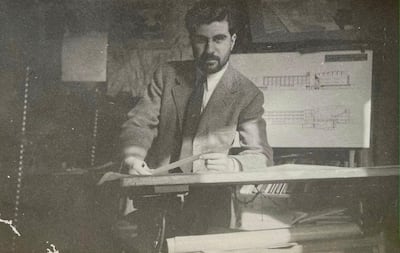
Mohamed Makiya and Said Ali Madhloom, who died in 2015 and 2017 respectively, were architects and friends; they both studied in Liverpool, married British women, and returned to Iraq in the 1940s. There, they joined Iraq's first art group, the Friends of Art Society, and became part of the burgeoning Baghdadiyat moment, which celebrated the culture and unique characters of the city.
With Henry Svoboda, the head of Architectural Consultancies of Iraq, they set up Baghdad's first commercial gallery, Al-Wasiti, in the 1960s. It was less a business proposition than a way to support the artists.
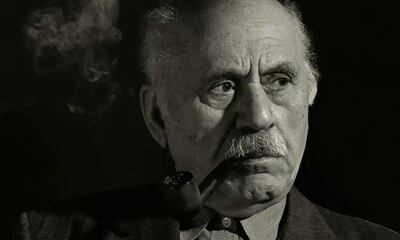
Kanan Makiya, Mohamed's son, describes them at the time as "penniless, living hand to mouth". Most of what became the Madhloom and Makiya collections was acquired simply from being in the thick of it. Kanan recalls that his father bought Faeq Hassan's Cubist El-Allabat (The Curd Sellers, 1950s) on the urging of Jewad Selim, who told the architect it was his friend's best work.
Selim's own sculpture Mother and Child (1953) wound up with Madhloom through a more poignant route. The sculpture, whose two discrete parts evoke the complex dynamic of closeness and separation between mother and child, had been a favourite plaything of Selim's daughter, Miriam. When the family were forced to leave Baghdad in 1971, it was too fragile to transport. Lorna Selim, painter and Jewad's wife, gave it to Madhloom to keep.
“I am delighted that one of my childhood loves is safe,” Miriam Selim says in the catalogue to the Bonhams sale.
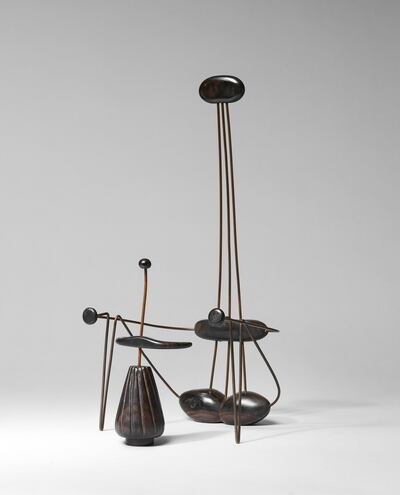
Later works reflect the worsening political situation in Iraq, such as Al Said's Hob al-Watan min al Iman (Loving the Homeland is Part of Faith, 1982). Kanan says that painting will be the hardest to part with. The work was made during a particularly bloody period in the Iran-Iraq War, when Iran, having stabilised after its revolution, was taking back territory from Iraq.
Giving pause to think
"There is nothing heroic or bombastic about this work," says Kanan. "The painting is sad, it's full of pathos, the words are scratched. The first word 'love' is very prominently displayed, and then the other words whittle away to nothingness.
"At the time, when state propaganda is blaring away ridiculous patriotic, tub-thumping kind of imagery in posters, here comes this painting, which gives you pause to think.”
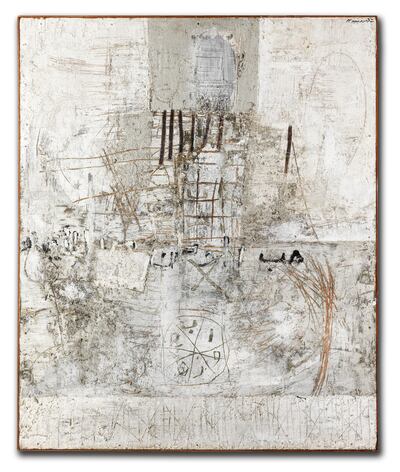
There has been interest in the sale from both Middle Eastern and non-Middle Eastern museums, Sagharchi says, buoyed by the quality of the works as well as their transnational character.
Selim's Mother and Child echoes the sculpture of the same name by Henry Moore, under whom Selim studied while at the Slade School of Fine Art in London. It is a classic example of the transmission of ideas between the western and Arab worlds in the mid-20th century, bearing Moore's sinuous modernism as well as Arab geometric elements.
Appropriating turath
"The generation was led by these central great pivotal figures," says Kanan. "They differed and bounced against each other – they competed vigorously with one another. But if you want to hunt for a slogan for what they all were doing, they were appropriating turath [Arabic for heritage] and imagining it in both a discernibly 'Iraqi' – in quotation marks, for Iraq is a new creation – and modern way."
As architects, Madhloom and Makiya pursued a similar path, putting ideas from Bauhaus and modernism to vernacular uses.
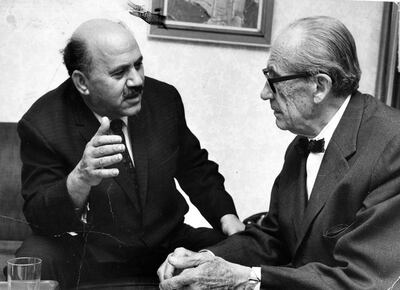
Though they share many biographical similarities, Sagharchi says he was relieved that there was little overlap among the 26 works the collections are bringing to auction. The work from Madhloom is earlier, as he mostly stopped acquiring works after he left Baghdad in the 1970s.
Makiya, who emigrated at the same time, continued collecting through the 1980s, particularly through the Kufa Gallery that he set up in London. Makiya also had a major collection of books and manuscripts, which was sold in 2016 at Sotheby's, and the Bonhams sale represents only a portion of the family's art collection.
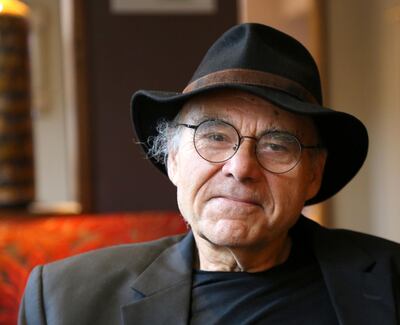
The future of that larger holding is unclear. Before Makiya died, he tried to send his archive to the Department of Architecture that he founded at the University of Baghdad. Friends begged him not to, Kanan recounts, saying they would end up in basements and be eaten by mice.
He wound up donating his archive to MIT. For the rest of the art collection, the idea of a museum in Baghdad, is “not a feasible project in Baghdad’s conditions at the moment,” Kanan says. “But it was something my father always dreamt of. It was what he wanted to do”.
